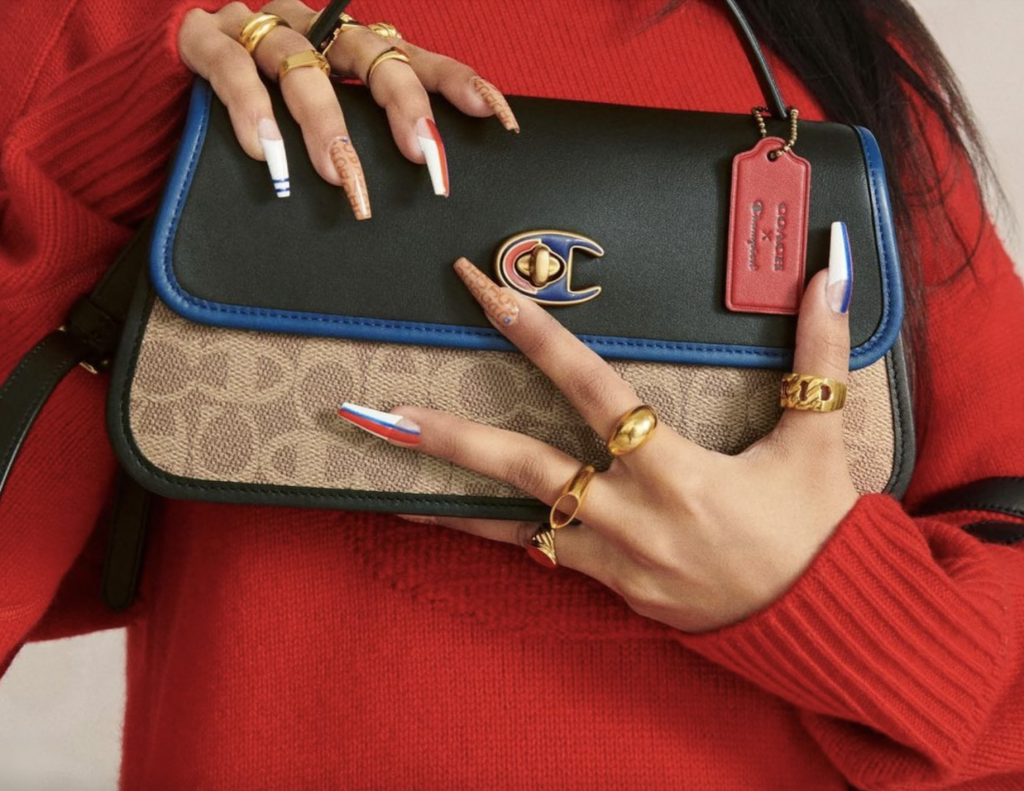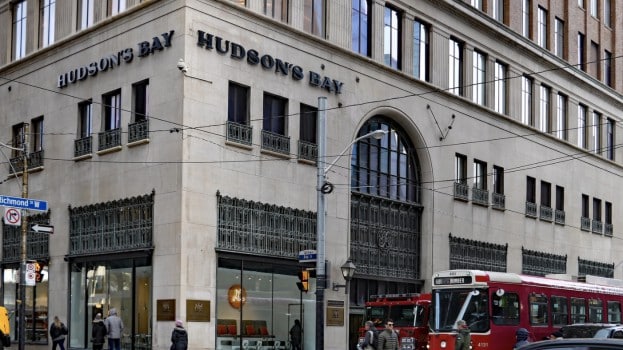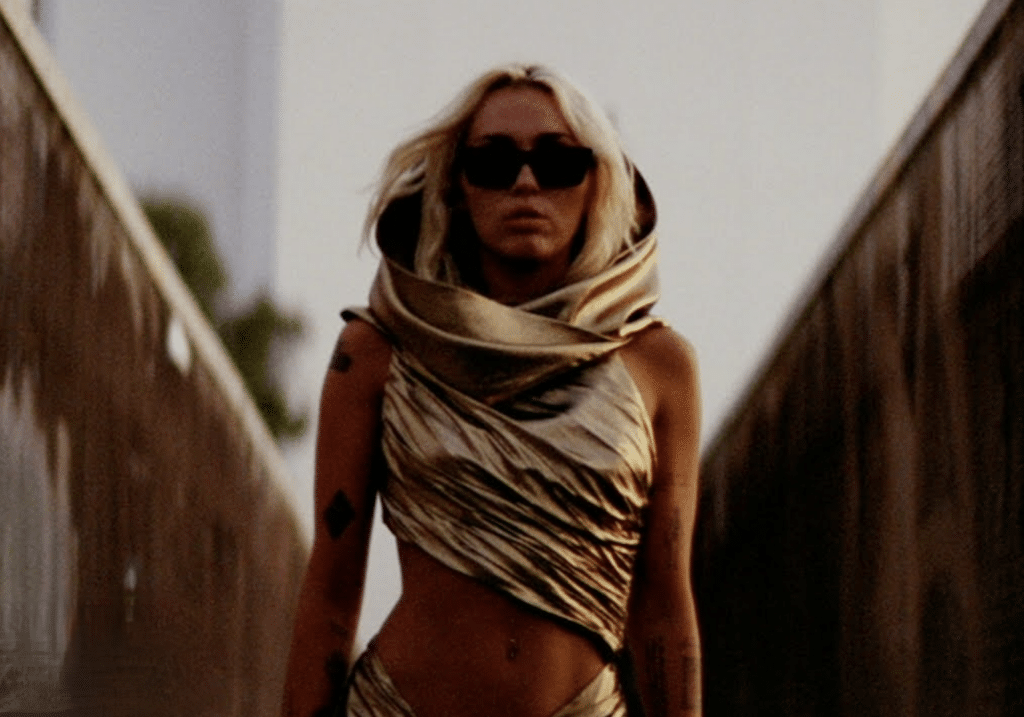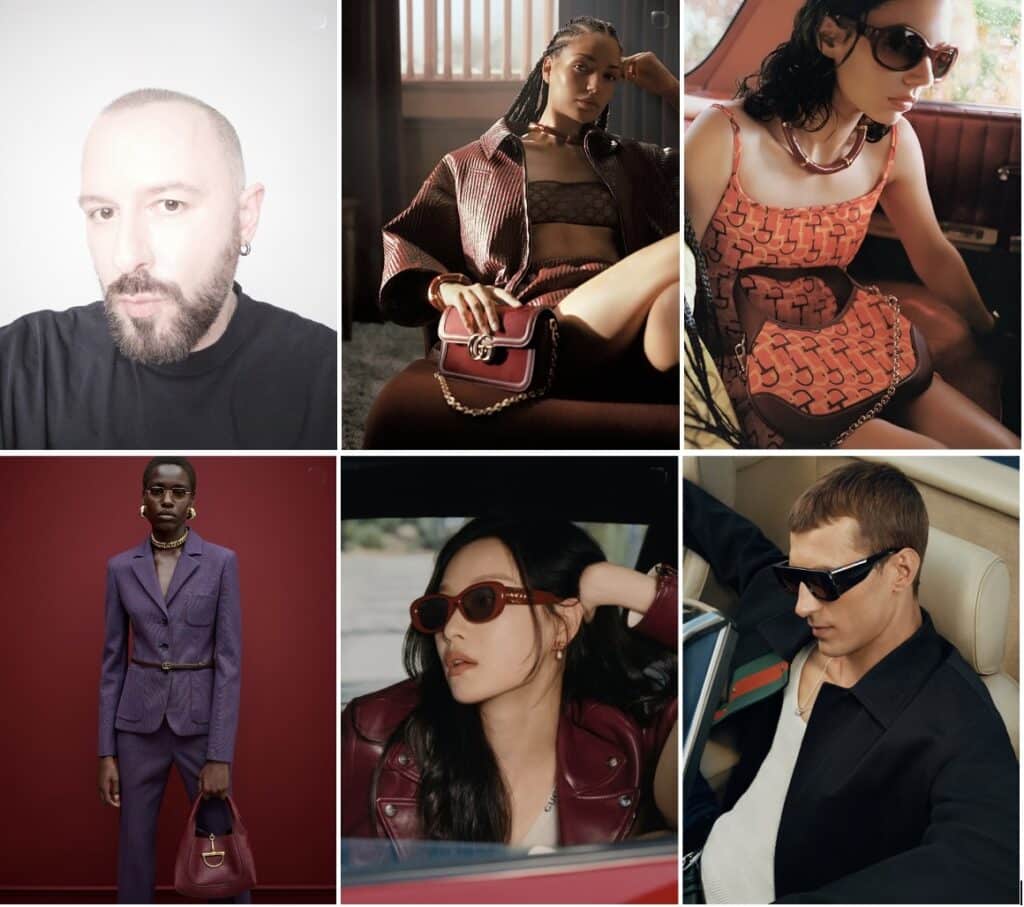Coach revealed its first collaboration with stalwart sportswear brand Champion this month, and while the limited-edition collaboration features some standout leather bags and leather jogging pants, as well as shearling jackets and throwback Coach bucket hats, the key touchpoint based on the media response thus far is not necessarily the offerings, themselves, but the branding that appears on them: a mashup of Coach’s storypatch with Champion’s iconic “C” logo in some iterations, and a combination of the two companies’ respective “C” symbols in others.
Speaking about the tie-up, which was revealed last week, Coach’s creative director Stuart Vevers revealed that one of the best parts was playing with the two companies’ “iconography,” including their respective logos. As it turns out, the collection not only marks the first time that the two American brands have teamed up, but it is also the first time that Champion has officially re-worked its logo. “We have never allowed this before,” Ned Munroe, chief global design officer at Hanesbrands, Champion’s parent, told WWD of the company’s modified logo. (The upturned but otherwise intact version of its “C” logo that appeared on sweatshirts in connection with Champion’s collaboration with Paris-based fashion brand Vetements for S/S 2016 seemingly does not count.)
In some ways, such event-induced rebrandings (and/or practicality-inspired ones) have become pretty common occurrences within the fashion industry. It is not unheard of for a company to tweak its branding upon the changing of the guard, for instance. Maybe most famously, when Hedi Slimane joined Yves Saint Laurent in 2012, he rebranded, dropping the “Yves” from the ready-to-wear collection’s branding and doing away – to some extent – with the formerly stylized “Yves Saint Laurent” word mark (and Cassandre’s 1961 intertwining “YSL” logo) in favor of a streamlined sans serif “Saint Laurent.” Many brands have since followed suit, swapping out more intricate – and less multi-medium friendly – fonts for simpler ones, and thus, the phenomenon of “blanding” was born.
Against that background, it is all-but-surprising to see the introduction of new branding assets – or better yet, modified branding assets (instances of going back to the drawing board altogether are relatively rare) – when a new team takes charge. A changed font here, a dropped accent there (Slimane again), a new monogram here (Riccardo Tisci and Peter Saville’s introduction of the “TB” monogram in 2018 comes to mind), a restyling there (i.e., Virgil Abloh’s very Virgil Abloh take on the “LV” logo), etc. are nearly par for the course, and serve to formalize the change at hand in an aesthetic way, while also boosting buzz – and ideally, bottom lines – at the same time since logo-emblazoned goods are high-volume-movers for luxury brands.
Interestingly, this has not necessarily proven true in connection with more than a decade of regular brand collaborations – whether it be fast fashion, high fashion tie-ups or partnerships between the likes of sportswear giants and fashion names, which have traditionally seen companies label such collab offerings as products of [Brand 1] x [Brand 2], with the individual brands maintaining their usual logo and/or stylized word mark. Yet, something of a change appears to be afoot. By way of a few recent collaborations, brands are seemingly becoming a bit more willing to play with their branding to indicate a tie-up than they have been in the past. The mash up of the Coach and Champion “C” logos, and the reworked Coach patch are, of course, examples of this, but there are others.
Gap, for instance – which faced quite a bit of flak when it unsuccessfully attempted to rebrand back in 2010 – revealed its ultimately-axed Telfar collaboration via a new logo that combined the burgeoning New York-based fashion brand’s “T” trademark with Gap’s signature blue hue and Spire font. Doubling down, the mall brand subsequently teased its impending collaboration with Kanye West’s Yeezy with a unique logo – a mix of the “YZY” mark and again, Gap’s navy-blue color mark. That collection is slated the drop this year.
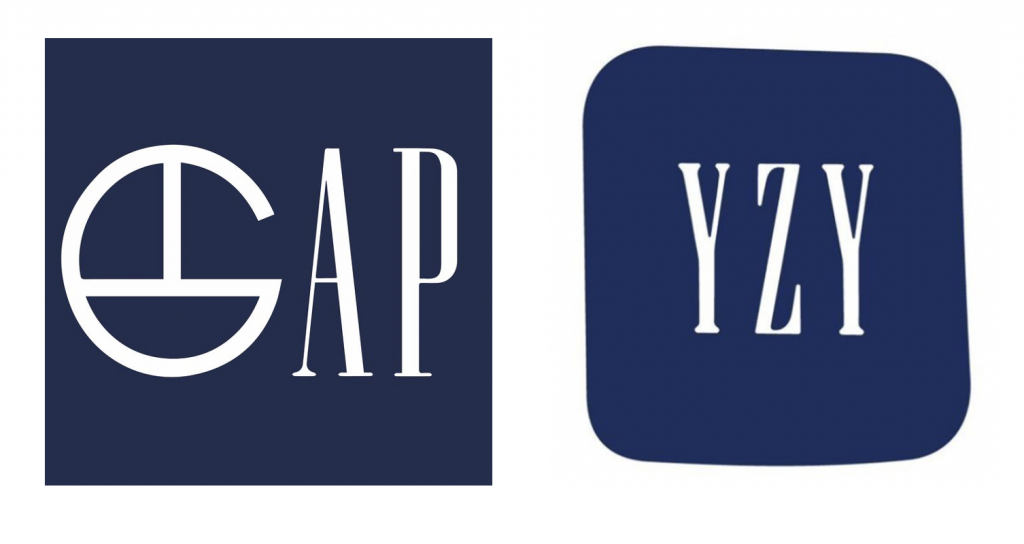
For a unisex capsule collection that pairs Chitose Abe’s Sacai and Jean Touitou’s APC, the parties meshed their names together to create a stylized “SA.P.C.Ai” mark that is emblazoned on t-shirts, totes bags, and hoodies, etc.
Still yet, the recently-revealed Gap logos come a few years after Louis Vuitton partnered with buzzy streetwear brand Supreme. In furtherance of that limited run of goods, the Paris-based brand took the rare step of inserting Supreme’s red-and-white box logo into its more than 100-year-old Toile Monogram pattern, and splashing it across apparel, accessories, and … skate decks.
These instances, among others, are striking because to a large extent, brands have been hesitant to mess with their logos too much (or at all really) in these specific types of scenarios. Rebrands can, after all, be risky business, particularly for companies that have established strong branding that resonates with consumers, and thus, has become synonymous with their products, ethos, and business operations as a whole.
In the luxury sphere, companies spend decades – even centuries, in some cases – carefully crafting themselves into brands that can demand thousands of dollars per handbag and even more, in many cases, for garments, and have consumers pay those prices because the brands, themselves, are so intrinsically synonymous with luxury and other reputation-specific elements that are communicated to consumers by way of their branding. As a result, a company’s branding amounts to an asset with value that is based largely on consistent use and consumer recognition, making it enticing for brands to stick to the status quo, especially when another brand and its proprietary branding is also in the mix.
Nonetheless, it seems that just as brands are proving increasingly willing to adjust and/or alter certain source-identifying elements to coincide with the beginning of a new creative director’s tenure, for example, such a fluid approach is slowly coming to collaborations, as brands aim to inject a sense of novelty by way of the branding at play. This is likely due, at least in part, to the fact that branded collaborations are relatively run of the mill and expected at this point. For a point of reference, it has been 17 years since Swedish fast fashion titan H&M garnered consumers’ attention when it introduced a headline-making collaboration with late Chanel creative director Karl Lagerfeld, and a lot has been done in the collaboration space since then.
In order to effectively cut through the noise of the market and drive demand at the outset and thereafter via resale among arguably collab-fatigued consumers, brands need to go a step further. By bolstering the limited edition wares that come from such collaborative tie-ups with distinctive new branding (waters that are still surprisingly unchartered), brands can establish an additional level of excitement, and bring some of the “added value” that consumers look for, thereby, not only driving engagement, but ideally, boosting sales.
(It is worth noting that distinctive branding is almost certainly to be a draw among the prized pool of young Chinese luxury consumers, who actively aim to “buy luxury goods that enable them to distinguish themselves from their peers,” according to Xiaoqing Chen, a Lecturer in Management at the University of Aberdeen, and Carol Zhang, an Assistant Professor in Tourism Marketing and Management at the University of Nottingham. The two academics note that “in addition the premium shopping experience,” the Chinese millennial consumers that they spoke to “repeatedly talked about the importance of having unique items” in connection with their practice of shopping for luxury goods internationally.)
At the same time, these new branding elements enable companies to collectively create one more (or several more) marketable assets to add to their portfolios of valuable intellectual property. It will be interesting to see if this budding embrace of slightly more fluid branding (as opposed to the stench embrace of existing assets only) catches on further.







